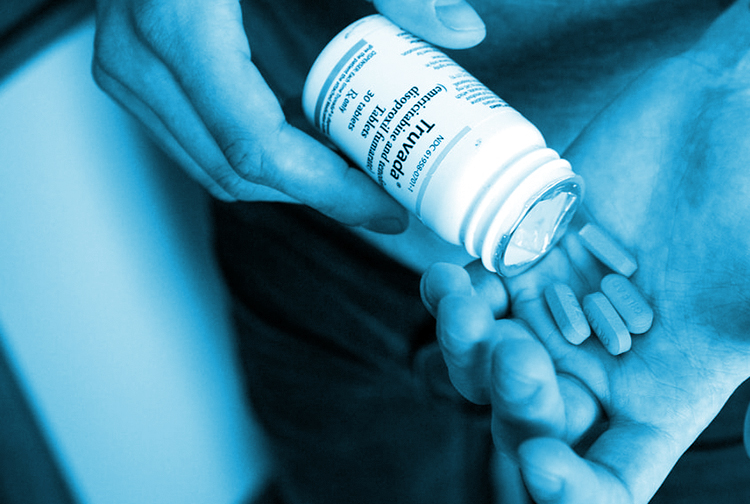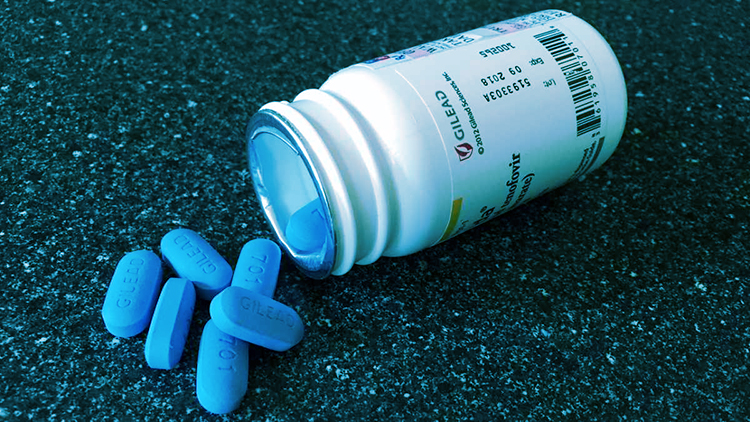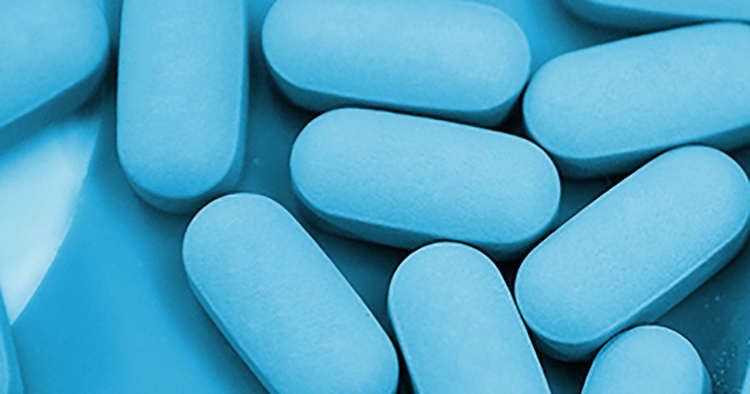PEP & PrEP

FAQs
- Only people who are HIV negative should use PrEP or PEP.
- You must be tested for HIV and have a documented negative test result before starting PrEP.
- PrEP and PEP are available by prescription from a medical provider, such as a physician, nurse practitioner, or physician assistant. You can also get PEP at your local emergency room or urgent care clinic, although these locations may provide just the first two or three days’ doses to get you started (for example, until your medical provider’s office reopens on a weekday). You will need to talk with your provider to see if PrEP or PEP is right for you.
- PrEP is more than just taking a pill every day; it also involves frequent medical visits and lab tests to check for HIV, other STIs, and any changes in kidney health.
- Neither PrEP nor PEP protects against other STIs or pregnancy, and they are not cures for HIV.
- PEP is taken for 28 days.
- PrEP does not have to be taken forever and can be stopped at any time under the supervision of your medical provider. When stopping PrEP, individuals should continue using it for four weeks after the last significant exposure.
- If you’ve used PEP in the last year, it might be a good idea to talk to your medical provider about PrEP.
- Curious about how to access PrEP or PEP in your community? Most private health insurance plans, as well as Medicaid, cover the cost of Truvada for PrEP.

All About PrEP
What is PrEP?
Pre-exposure prophylaxis (or PrEP) is when people at very high risk for HIV take HIV medicines daily to lower their chances of getting infected. A combination of two HIV medicines (tenofovir and emtricitabine), sold under the name Truvada® (pronounced tru vá duh), is approved for daily use as PrEP to help prevent an HIV-negative person from getting HIV from a sexual or injection-drug-using partner who’s positive. Studies have shown that PrEP is highly effective for preventing HIV if it is used as prescribed. PrEP is much less effective when it is not taken consistently.
Why take PrEP?
For those at very high risk for HIV, PrEP can significantly reduce your risk of HIV infection if taken daily. Daily PrEP use can lower the risk of getting HIV from sex by more than 90% and from injection drug use by more than 70%. You can combine additional strategies with PrEP to reduce your risk even further.
Is PrEP a vaccine?
No. PrEP does not work the same way as a vaccine. A vaccine teaches your body to fight off infection for several years. For PrEP, you take a pill every day by mouth. The pill that was shown to be safe and to help block HIV infection is called “Truvada” (pronounced tru vá duh). Truvada is a combination of two drugs (tenofovir and emtricitabine). If you take PrEP daily, the presence of the medicine in your bloodstream can often stop HIV from taking hold and spreading in your body. If you do not take PrEP every day, there may not be enough medicine in your bloodstream to block the virus.
How well does PrEP work?
Studies have shown that PrEP reduces the risk of getting HIV from sex by more than 90% when used consistently. Among people who inject drugs, PrEP reduces the risk of getting HIV by more than 70% when used consistently.
Is PrEP safe?
PrEP can cause side effects like nausea in some people, but these generally subside over time. No serious side effects have been observed, and these side effects aren’t life threatening. If you are taking PrEP, tell your health care provider about any side effects that are severe or do not go away.
How can I start PrEP?
PrEP can be prescribed only by a health care provider, so talk to yours to find out if PrEP is the right HIV prevention strategy for you. You must take PrEP daily for it to work. Also, you must take an HIV test before beginning PrEP to be sure you don’t already have HIV and every 3 months while you’re taking it, so you’ll have to visit your health care provider for regular follow-ups.
How can I get help to pay for PrEP?
The cost of PrEP is covered by many health insurance plans, and a commercial medication assistance program provides free PrEP to people with limited income and no insurance to cover PrEP care.

Should I consider taking PrEP?
PrEP is for people without HIV who are at very high risk for getting it from sex or injection drug use. The federal guidelines recommend that PrEP be considered for people who are HIV-negative and in an ongoing sexual relationship with an HIV-positive partner.
This recommendation also includes anyone who:
- isn’t in a mutually monogamous* relationship with a partner who recently tested HIV-negative, or
- is a gay or bisexual man who has had anal sex without using a condom or been diagnosed with an STD in the past 6 months.
PrEP is also recommended for people who have injected drugs in the past 6 months and have shared needles or works or been in drug treatment in the past 6 months.
If you have a partner who is HIV-positive and are considering getting pregnant, talk to your doctor about PrEP if you’re not already taking it. PrEP may be an option to help protect you and your baby from getting HIV infection while you try to get pregnant, during pregnancy, or while breastfeeding.
Because PrEP involves daily medication and regular visits to a health care provider, it may not be right for everyone. And PrEP may cause side effects like nausea in some people, but these generally subside over time. These side effects aren’t life threatening. See Is PrEP safe?
* Mutually monogamous means that you and your partner only have sex with each other and do not have sex outside the relationship.
If I take PrEP, can I stop using condoms when I have sex?
No, you should not stop using condoms because you are taking PrEP. PrEP doesn’t give you any protection against other STDs, like gonorrhea and chlamydia. Also, while PrEP can significantly reduce your risk of HIV infection if taken daily, you can combine additional strategies like condom use with PrEP to reduce your risk even further.
If used the right way every time you have sex, condoms are highly effective in preventing HIV and some STDs you can get through body fluids, like gonorrhea and chlamydia. However, they provide less protection against STDs spread through skin-to-skin contact, like human papillomavirus or HPV (genital warts), genital herpes, and syphilis. See How well do condoms prevent HIV? Learn the right way to use a male condom.
How long do I need to take PrEP?
You must take PrEP daily for it to work. But there are several reasons people stop taking PrEP. For example,
- If your risk of getting HIV infection becomes low because of changes in your life, you may want to stop taking PrEP.
- If you find you don’t want to take a pill every day or often forget to take your pills, other ways of protecting yourself from HIV infection may work better for you.
- If you have side effects from the medicine that are interfering with your life, or if blood tests show that your body is reacting to PrEP in unsafe ways, your provider may stop prescribing PrEP for you.
How long do I have to take PrEP before it is effective?
When taken every day, PrEP is safe and highly effective in preventing HIV infection. PrEP reaches maximum protection from HIV for receptive anal sex at about 7 days of daily use. For all other activities, including insertive anal sex, vaginal sex, and injection drug use, PrEP reaches maximum protection at about 20 days of daily use.

What are PEP and PrEP?
Antiretroviral (ARV) therapy not only helps people living with HIV. It also plays a role in preventing transmission of the virus.
Post-exposure prophylaxis (PEP): PEP involves taking a short course of ARV drugs, usually for a month, after a high-risk exposure. To be most effective, PEP should be started immediately after possible exposure, waiting no more than 72 hours.
If you suspect a high-risk exposure to HIV—semen leaking out of a condom during intercourse with an HIV-positive insertive partner; receptive anal sex without a condom with a partner who is either HIV positive or whose status you do not know or you have shared drug-injection works with someone who is either HIV positive or whose status you do not know—contact your health care provider or local hospital emergency room as soon as possible.
Pre-exposure prophylaxis (PrEP): PrEP is an HIV prevention tool in which an HIV-negative person takes antiretroviral medication to reduce the risk of contracting HIV. Currently, the available form of PrEP entails taking the pill Truvada, which is made of two drugs—tenofovir and emtricitabine. When these meds build up in the human body, they can stop HIV from replicating and establishing an infection. PrEP was approved in 2012 by the U.S. Food and Drug Administration (FDA) with the requirement that it be used every day, even during periods of minimal or low-risk sexual activity. Future studies are exploring intermittent dosing strategies (for example, using PrEP only during high-risk periods). Researchers are also looking into injectable, long-lasting forms of PrEP as well as different medications that could be used as PrEP.
The Centers for Disease Control and Prevention (CDC) recommends Truvada for those at high risk of HIV, including:
- Those in a relationship with an HIV-positive partner.
- Men who don’t use condoms when having sex with men.
- Men who have been diagnosed with a sexually transmitted infection (STI) in the past six months and who are not in a mutually monogamous relationship with an HIV-negative partner.
- Anyone who, in the past six months, has shared equipment when injecting illicit drugs or who has been in an injection drug treatment program.
It is recommended that providers prescribe no more than a 90-day supply of PrEP and to offer extensive HIV risk-reduction counseling, adherence counseling and condoms. It is recommended that, before renewing Truvada scripts, providers follow up with patients every two to three months to test again for HIV, to assess adherence and HIV risk behavior, and to provide ongoing support and counseling. Kidney function testing is again recommended three months after a person first starts PrEP and yearly thereafter. Tests for common STIs are also recommended every six months, even if a person has no symptoms.
PrEP is appropriate for periods of time when people have greater risk for contracting HIV. Those periods may be short, long or recurrent, depending on the individual. The CDC also recommends that before people discontinue PrEP—whether because of safety concerns, a positive HIV test result, or a person requests to stop treatment—their providers should link them to HIV care (if a person has become infected) or ongoing HIV risk-reduction counseling and support. For people who have hep B, their providers should also discuss whether to continue treatment as a means to control their hepatitis.

All About PEP
What is PEP?
PEP stands for post-exposure prophylaxis. It means taking antiretroviral medicines (ART) after being potentially exposed to HIV to prevent becoming infected.PEP must be started within 72 hours after a recent possible exposure to HIV, but the sooner you start PEP, the better. Every hour counts. If you’re prescribed PEP, you’ll need to take it once or twice daily for 28 days. PEP is effective in preventing HIV when administered correctly, but not 100%.
Is PEP right for me?
If you’re HIV-negative or don’t know your HIV status, and in the last 72 hours you think you may have been exposed to HIV during sex (for example, if the condom broke), shared needles and works to prepare drugs (for example, cotton, cookers, water), or were sexually assaulted,
talk to your health care provider or an emergency room doctor about PEP right away. PEP should be used only in emergency situations and must be started within 72 hours after a recent possible exposure to HIV. It is not a substitute for regular use of other proven HIV prevention methods, such as pre-exposure prophylaxis (PrEP), which means taking HIV medicines daily to lower your chance of getting infected; using condoms the right way every time you have sex; and using only your own new, sterile needles and works every time you inject.PEP is effective, but not 100%, so you should continue to use condoms with sex partners and safe injection practices while taking PEP. These strategies can protect you from being exposed to HIV again and reduce the chances of transmitting HIV to others if you do become infected while you’re on PEP.If you’re a health care worker and think you’ve had a possible HIV exposure at work, see the following question.
When should I take PEP?
PEP must be started within 72 hours after a possible exposure. The sooner you start PEP, the better; every hour counts.Starting PEP as soon as possible after a potential HIV exposure is important. Research has shown that PEP has little or no effect in preventing HIV infection if it is started later than 72 hours after HIV exposure.If you’re prescribed PEP, you’ll need to take it once or twice daily for 28 days.
Does PEP have any side effects?
PEP is safe but may cause side effects like nausea in some people. These side effects can be treated and aren’t life-threatening.
Where can I get PEP?
Your health care provider or an emergency room doctor can prescribe PEP. Talk to them right away if you think you’ve recently been exposed to HIV.
How can I pay for PEP?
If you’re prescribed PEP after a sexual assault, you may qualify for partial or total reimbursement for medicines and clinical care costs through the Office for Victims of Crime, funded by the US Department of Justice (see the contact information for each state).If you’re prescribed PEP for another reason and you cannot get insurance coverage (Medicaid, Medicare, private, or employer-based), your health care provider can apply for free PEP medicines through the medication assistance programs run by the manufacturers. Online applications can be faxed to the company, or some companies have special phone lines. These can be handled urgently in many cases to avoid a delay in getting medicine. If you’re a health care worker who was exposed to HIV on the job, your workplace health insurance or workers’ compensation will usually pay for PEP.
Can I take a round of PEP every time I have unprotected sex?
PEP should be used only in emergency situations. PEP is not the right choice for people who may be exposed to HIV frequently—for example, if you often have sex without a condom with a partner who is HIV-positive. Because PEP is given after a potential exposure to HIV, more drugs and higher doses are needed to block infection than with PrEP, or pre-exposure prophylaxis. PrEP is when people at high risk for HIV take HIV medicines (sold under the brand name Truvada) daily to lower their chances of getting HIV. If you are at ongoing risk for HIV, speak to your doctor about PrEP. Also, read our Q&As on PrEP.

